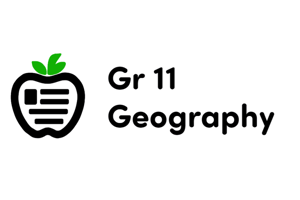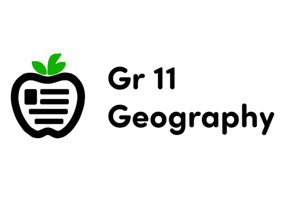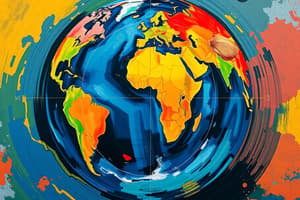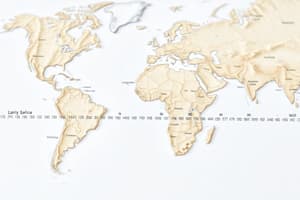Podcast
Questions and Answers
What is the range of latitude on Earth?
What is the range of latitude on Earth?
- -90° to +90° (correct)
- 0° to 180°
- 0° to 90°
- -180° to 180°
Where is the prime meridian located?
Where is the prime meridian located?
- Beijing, China
- New York City, USA
- Greenwich, England (correct)
- Paris, France
Which of the following lines runs halfway between the North and South Poles?
Which of the following lines runs halfway between the North and South Poles?
- Tropic of Capricorn
- Tropic of Cancer
- Equator (correct)
- Prime Meridian
What are the latitudinal coordinates of the Tropics of Cancer and Capricorn?
What are the latitudinal coordinates of the Tropics of Cancer and Capricorn?
In what direction do longitude values increase from the Prime Meridian?
In what direction do longitude values increase from the Prime Meridian?
What is the maximum longitude value on Earth?
What is the maximum longitude value on Earth?
Flashcards are hidden until you start studying
Study Notes
Understanding Geographical Coordinates: Latitude, Longitude, Prime Meridian, and Important Lines
Mastering geographical coordinates is vital for locating places on our Earth with precision. Let's explore these key concepts—latitude, longitude, the prime meridian, and significant latitudinal lines—to build a foundation for understanding our complex globe.
Latitude and Longitude
Latitude and longitude are geometric angles used worldwide to identify specific locations on Earth's surface. Latitude measures how far north or south a point is from the Equator, ranging from -90° at the South Pole to +90° at the North Pole. Longitude, on the other hand, indicates how far east or west a point is from the Greenwich meridian zero line (prime meridian), ranging from -180° westward to 180° eastward.
Primer Meridian and Datums
Most widely adopted today is the International Terrestrial Reference System (ITRS) with the prime meridian passing through Greenwich, England. However, some countries like France, Spain, and China utilize national variants. Each variant emploes a unique reference ellipsoid, known as a datum, to represent the shape of the Earth.
Important Latitudinal Lines
- Equator: The equator runs east and west halfway between the North and South Poles. Its latitude is 0°.
- Tropics of Cancer and Capricorn: At 23.45° both north and south, these lines separate the tropic regions from temperate zones.
- Arctic Circle and Antarctic Circle: Located at 66.55° north and 66.55° south, these demark the boundary separating the Arctic and Antarctic from lower latitudes.
- Parallels: Parallel lines of constant latitude extend from pole to pole, providing further subdivisions of global space.
Understanding these fundamental aspects of geographical coordination enables us to pinpoint locations precisely across our diverse and beautiful planet.
Studying That Suits You
Use AI to generate personalized quizzes and flashcards to suit your learning preferences.




